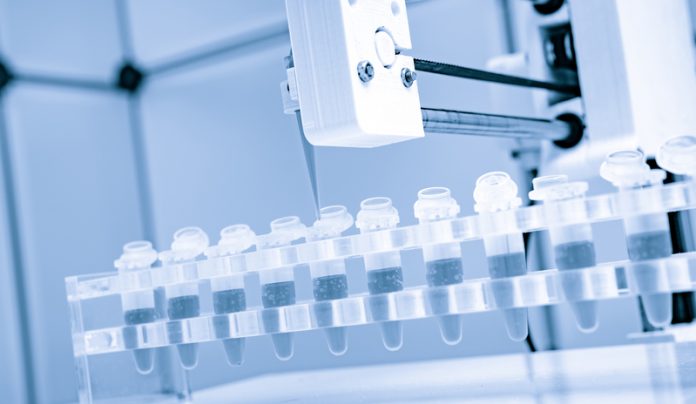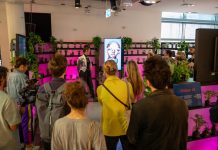Dr Michael Morrison discusses the use of advanced biological therapies, such as gene therapy, in treatment for a personalised approach
Biomodifying technologies are the tools scientists use to modify living biological material at the molecular and cellular level. Examples include gene editing using tools such as CRISPR/cas9, 3D printing of ‘bioinks’ that contain suspensions of living cells, and ‘induced pluripotent stem cell’ (iPSC) technology, which takes ordinary cells of the adult body and ‘reprograms’ them so that, like the cells of an early embryo, they can become any type of cell in the body, eye, liver, heart and so on.
Each of these has the potential to support personalised medicine, in the form of therapies tailored in various ways to patient’s biology:
- iPSC therapies can be made by taking a small sample of a patient’s own blood or skin cells to be reprogrammed and turned into new cells and tissues for transplant. These new cells and tissues should have similar immune system markers to the patient’s natural body, making the patient’s immune system more likely to identify the transplanted tissue as ‘self’ rather than attack it as invasive ‘foreign’ material.
- Gene editing tools such as CRISPR/cas9 could be designed to find a particular mutation against the background of the patient’s own individual DNA sequence. Rare gene mutations might require a unique targeting sequence designed for that individual patient or a very small number of patients in the world with that particular mutation.
- 3D bioprinted materials for transplant could be tailored to the body size, or the exact nature of an injury, for the patient needing a transplant. This is particularly relevant for paediatric patients as the shortage of suitably-sized organs for paediatric transplant is particularly serious.
Personalised medicine, also known as ‘precision medicine’ in the USA, has become an important focus for policy in medicine and medical innovation. Large scale projects such as Genomics England seek to enable more accurate, ‘personalised’ diagnosis of disease through new technologies such as whole genome sequencing. However, personalisation of therapies is by no means inevitable, nor is it yet clear what form or forms it may take.
Many commercial developers working on cell or gene based therapeutics prefer mass produced products, where every batch is the same. This allows for centralised manufacturing, mass distribution, and business models similar to those already established for pharmaceuticals. Globally, many firms are working on ‘off the shelf’ cell therapies and ‘one size fits all’ gene editing and gene therapy products.
Truly patient-specific, biomodifying therapies are only likely to occur as one-off exceptional interventions, delivered through the existing regulatory pathways for hospital exemptions or hospital specials. Preliminary evidence from an MHRA Patient Group Consultative Forum[i] on biomodifying technologies also suggests that patients are not enthusiastic about truly bespoke therapies, preferring interventions that come with the evidence base from testing and evaluation in a relevant patient population. This produces not only medical evidence but experience-based knowledge of how to navigate care pathways and cope with treatment regimens that patients can share with each other as a source of social support.
All therapies that use a patient’s own cells (‘autologous’ therapies) have some degree of personalisation. However, as existing ‘CAR-T’ therapies for cancer demonstrate, manufacturing of autologous therapies can take a ‘mass customisation’[ii] approach, with a standardised process being applied to a patient-specific starting material, to give a defined product. While each batch is patient-specific, it is not a new or unique product from the regulatory perspective. Verifying the safety and quality of patient-specific batches of cell therapies is one of the major limiting factors of autologous therapies in terms of time and cost.
An alternative vision currently being discussed for ‘off the shelf’ iPSC therapies involves creating ‘seed stock’ banks of cells from donors selected to be compatible with the most common immune profiles in any given population.[iii] This would allow therapies to be made from a ‘starting stock’ of cells matched to the immune system of each particular patient, reducing the need for immune suppression and the likelihood of transplant rejection. The degree of personalisation involved is similar to that of ‘assemble to order’ manufacturing in other sectors, where options are selected from a range of pre-defined components and then assembled to produce a product that works for the particular ‘customer’. The degree of ‘assembly’ in manufacturing a cell therapy is much more complex than in most other sectors. The business model is also rather different as individual companies would all use the same starting material and then claim the procedure for making and delivering the end product as the commercially sensitive, revenue-generating and patent-protected part of the process.
Finally, 3D bioprinting offers another route to ‘mass customisation’. Bioprinting, like other 3D printing is a form of additive manufacture. Complex structures are designed using Computer Aided Design (CAD) software and then repeat layering of materials from a specialised printing device is used to generate a three dimensional object. Additive manufacturing is geared towards cost-effective, low volume manufacturing of complex 3D products tailored to small group or individual spatial (geometric) requirements. Non-invasive medical devices such as orthopaedic supports, in-ear hearing aids, and orthodontic aligners are already produced using 3D printing of plastic or metal and personalised to the contours of individual patients. This can be done rapidly because patient-specific scans or casts of body parts can be readily converted to CAD files which can then be sent to a 3D printer.
This model of mass customisation has been termed ‘standardised individualisation’ because the process of personalisation is made routine (through the scans) and built into the production system rather than involving manual production of a tailored item.[iv] Applied to bioprinting this could enable ‘routinely personalised’ tissue implants to be created. If personalisation primarily involves the physical shape and size of the bioprinted construct rather than its biological mode of action, this may be more amenable to regulation through existing pathways for ‘patient-matching’ implants and prosthetics than is the case for other gene and cell therapies. However, this will not always be the case for bioprinted transplants.
These are some of the main potential pathways for personalisation of biomodifying therapies. It appears likely that mass production of therapies for certain conditions will remain the most commercially attractive option, while others could benefit from one or more of the forms of personalisation outlined above. Each option requires different organisational structures, different skill sets from the workforce, and different forms of policy and regulatory support. It is therefore important to find the balance between having sufficient flexibility to allow personalisation to operate alongside mass manufacture, while maintaining quality and protecting patient safety.
Michael Morrison
Senior Researcher in Social Science
Centre for Health, Law and Emerging Technologies (HeLEX), Faculty of Law, University of Oxford
And Research Affiliate with the Institute for Science, Innovation and Society, School of Anthropology & Museum Ethnography, University of Oxford
https://www.law.ox.ac.uk/people/michael-morrison
The research underpinning this piece was supported by the Economic and Social Research Council grant number ES/P002943/1 and the Leverhulme Trust grant number RPG-2017-330
[i] The MHRA Patient Group Consultative Forum meeting on Biomodifying Technologies and their potential for personalised medicine was held on 30 January 2020 at canary Wharf in London. A full report of the discussion is planned for publication in early 2021.
[ii] James H. Gilmore & B. Joseph Pine II “The four faces of mass customisation”. Harvard Business Review, January-February issue 1997. Available from https://hbr.org/1997/01/the-four-faces-of-mass-customization
[iii] Jacqueline Barry, Johan Hyllner, Glyn Stacey, Craig J. Taylor & Marc Turner. Setting Up a Haplobank: Issues and Solutions. Current Stem Cell Reports 1, 110–117, 2015.
[iv] J. Spallek, O. Sankowski and D. Krause. “Influences of additive manufacturing on design processes for customised products”. 14thInternational Design Conference – DESIGN 2016; https://www.designsociety.org/download-publication/38861/INFLUENCES+OF+ADDITIVE+MANUFACTURING+ON+DESIGN+PROCESSES+FOR+CUSTOMISED+PRODUCTS








